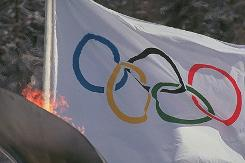|
The Quest for the Rings PanStadia International, Volume 6 / No 4, April 2000, Pages 6-11 By James Pieper AIA NCARB
The power of the Olympics, the international recognition and the pursuit to be the best draws many cities to consider the opportunities of hosting the world’s most prestigious event. The political, financial, physical, and organizational structure and process required to successfully masterplan and facilitate this auspicious event is a challenge few can comprehend.
Preparing the physical components for an Olympics is an enormous challenge. Understanding the issues of planning, design and construction of Olympic venues can help the Organizing Committee stay focused on the goal and minimize the potential pitfalls of a successful Olympic bid. Identifying new facilities and evaluating existing facilities to address the Olympic requirements (including their regional locations with respect to transportation and security) requires careful deliberation and research. Existing facilities must be evaluated against current building codes and accepted industry norms.
The construction of the physical facilities can take different approaches. In Atlanta, Georgia, for example, the approach was to minimize capital outlay and develop facilities that would be viable after the Olympics. Atlanta Committee for the Olympic Games worked with colleges, universities and professional sports teams to make certain that every facility would continue to be well used even after the Games concluded. If the future utilization of a particular venue was in doubt, it was built as a temporary facility or the facility brief was altered to reflect temporary usage. Other venues were designated for conversion to alternate uses, such as Atlanta’s Olympic Stadium, which was converted from athletics to Major League Baseball.
In Sydney, Australia, with a construction budget of nearly three times that of Atlanta, the approach was to construct an impressive array of new facilities to serve as a legacy to the spirit of the athletes and sport in Australia. These facilities then would be available for use by the people of Sydney as well as host future national and international events. |

